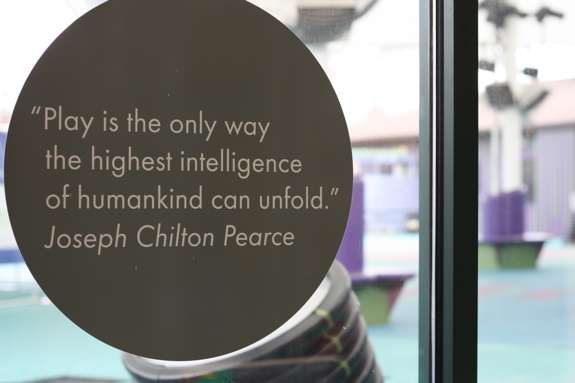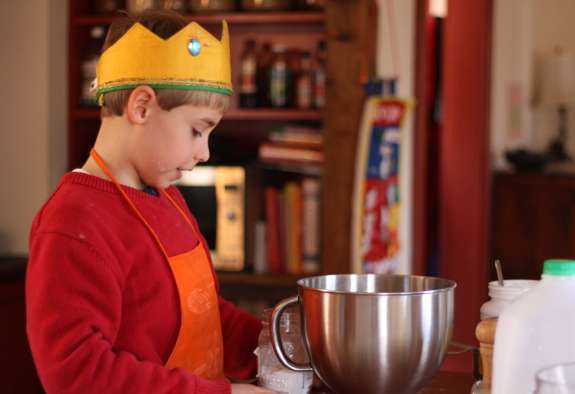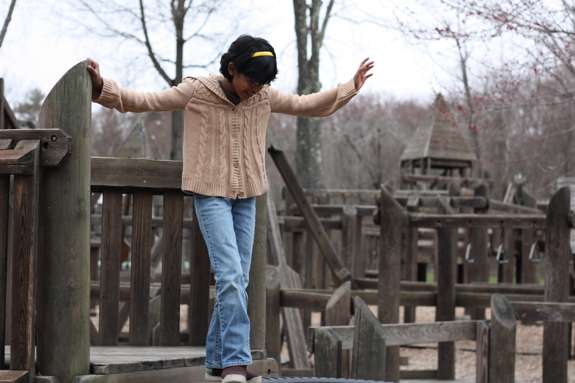Editor’s note: I really appreciate this piece – even though it’s a couple of years old. I rarely see kids playing in the streets these days. Neighbors down the street, who are retired and raised their kids in this neighborhood, comment how sad it is to usually just see my little girl playing outside. Parents over-schedule their kids with activities today. These poor kids are subjected to 6 hour school days followed by a plethora of extra activities then we put them through ridiculous testing and wonder why are they so stressed out these days? I remember speaking with a local neighbor boy earlier this year (yep, don’t see him or his sister outside playing either) and he was telling me of the testing he was taking at school. I believe he was in 3rd. Anyway he was telling me how stressed out he was. Wow. Let that one sink in. A 10 year old little boy saying how stressed he was. Words that, if ever used, should be coming out of an adults mouth. We need a change – a return to letting kids be KIDS.
Jamie Martin, editor of Simple Homeschool, also blogs about motherhood at Steady Mom
Iwant my kids to have a childhood. A living, breathing, mud-between-toes, romping-in-woods, staring-at-the-sky childhood. A secure foundation setting the stage for a secure life.
The gift of childhood. I allow my kids to slowly unwrap it each day within our homeschool.
But as I look around–at influences, at media, at society–I see childhood disappearing, evaporating further with each passing year. Are we all okay with that?
I’m not. For the good of our children, for the good of our society, for the good of the world we need to reclaim it.
How did this happen?
Author David Elkind saw it coming–tried to warn us, but we didn’t listen. Over 30 years ago his book The Hurried Child: Growing Up Too Fast Too Soon was published. In the most recent edition from 2001, Elkind describes what he now sees as not only a hurrying of childhood, but a complete reinvention of it.
In explaining how and why this has happened, Elkind points to the concepts of “infant” education, out-of-home care for young children, targeting children as consumers, the influence of screens in kid life, and moving childhood indoors:
“When I first wrote this book, I was most concerned about the stress our culture placed on children and the mental health consequences of continued emotional upset. Today, however, the sedentary lifestyle introduced by our new technologies makes child physical health an equally important concern.”
~ From the Preface to the 25th Anniversary Edition, The Hurried Child
The tools and technologies we now live with are nothing short of miraculous. But in the same way that a hammer can be used to build a house or tear one down, we can use the tools of our society to build childhood or tear it down.
When children and adults spend more time, by far, with faces in screensthan in books or conversation, what do we expect will be the result?
Are we parenting with purpose or parenting for convenience?
Childhood is not the same as adulthood.
Childhood is unique, a once-in-a-lifetime chance to let life unfold slowly. Those who reach the average Western life expectancy of around 80 years spend 75% of their lives as adults, only 25% as children. Why rush through what is already a short and precious phase?
It isn’t easy to recover a lost childhood. And far too many of us are ourselves the culprits and thieves–in the race to look good in front of friends and family we push, enroll, and bribe for bragging rights of whose offspring read, wrote, or beat the other team in little league first.
Imagine this phase of life as an inverted pyramid.
We start off at the narrow end, protecting and nurturing our babes–allowing influences, media, and screens in at the right time–not the time someone else tells us is right, not the time when we feel pressured by our peers or even our own children, but the time we feel inside is right.
The goal is not to keep that narrow focus forever; the goal is to slowly and steadily move outward. The end aim of parenting this way isn’t sheltering, but influence.
Finding our way back
Finding our way back to childhood means planning for and allowing margin in our lives and the lives of our kids.
Author Richard Swenson defines margin as “the space that once existed between ourselves and our limits. It’s something held in reserve for contingencies or unanticipated situations.” It’s in this in-between space that the magic of childhood casts its spell–allowing our kids to fall in love with this world that will one day be their grown-up inheritance.
One of my favorite parenting books, Simplicity Parenting, outlines a prescriptive remedy to families on the fast track toward complication instead of connection. Author Kim John Payne offers practical suggestions on simplifying our children’s environments, rhythms, and schedules. I highly recommend it.
But the first step in reclaiming this phase of life is to acknowledge its rapid disappearance. I’m convinced that parents are not intentionally stealing it as much as we are not intentionally choosing it. We are the only ones who can win the war on childhood–our kids cannot. By the time they realize what they’ve lost it will be too late.
We are the guardians of their childhood. Let’s stop shirking our duty and take the responsibility seriously.
Our kids deserve it.
“In the end, a playful childhood is the most basic right of children.”
~ David Elkind, The Hurried Child
Originally published on April 22, 2013
Sourced from: http://simplehomeschool.net/childhood/




